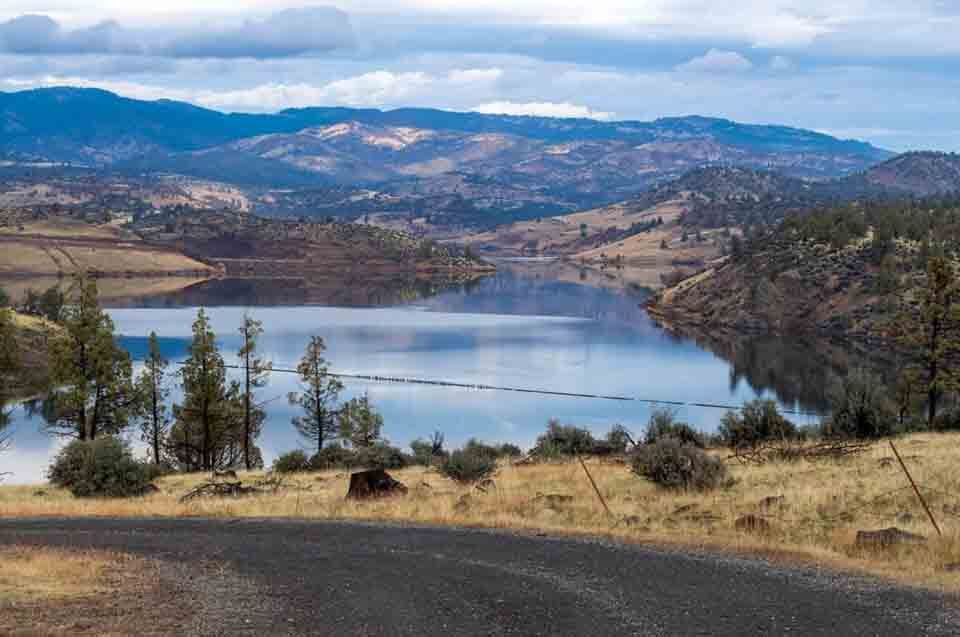Deconstruction of Klamath River Iron Gate Dam Begins

KLAMATH COUNTY, Ore. — The deconstruction of the Klamath River Iron Gate Dam has begun, involving the removal of one million cubic yards of rock, clay, and sand. The Iron Gate is the lowest of four aging hydroelectric dams on the Klamath River that are being removed to restore hundreds of miles of salmon breeding grounds.
Emotional Tribesmen Witness Start of a Project That Will Culminate in the Return of the Salmon Population
It was an emotional moment for activists and members of the Karuk and Yurok Tribes who gathered at the Iron Gate Dam to witness the first shovel of dirt being removed from the dam wall. This was the culmination of decades of petitioning for the removal of the dams which were responsible for the decline of the salmon population, a fish sacred to tribe members who regard the fish as a gift from God.
The Iron Gate Dam on the border between Oregon and California, is an earthen dam with a 173-foot wall. The Klamath River Renewal Corporation (KRRC) began the deconstruction work after receiving permission from the Federal Energy Regulatory Commission (FERC). The project began with the removal of the first 13 feet of the dam wall from the top of the wall.
The KRRC CEO, Mark Bransom, describes the deconstruction as the “culmination of two decades of activism.” He says construction reviews, engineering, and planning led to the moment when the first scoop of earth was removed from the dam wall. Bransom says removed rocks, clay, and sand will be transported by dump trucks to a nearby ‘borrow pit’ that was created in the early 1960s when material was removed for the original construction of the Iron Gate Dam. About 20% of the debris will fill in the concrete spillway adjacent to the dam, on the northern side of the Klamath River.
Bransom says the FERC will authorize the removal of the rest of the Iron Gate Dam once it has determined that there is no risk of high water to compromise the earthen structure. The most upstream of the four river dams, the J.C. Boyle in Southern Oregon, will be deconstructed at the same time.
See also: Biden Administration Brokered Salmon Restoration Plan Inked By Tribal Leaders, Kotek And Inslee
‘Tear Down the Iron Gate’
Deconstruction of the Copco 1 Dam began in late January and that event was witnessed by Petey Brucker, activist, songwriter, and musician, who cried as he watched the river run free for the first time in countless years.
Brucker wrote the song ‘Tear Down the Iron Gate.’ He passed away on April 22 due to a rare neurological illness, yet his legacy will endure through his collaborative spirit, unwavering determination, and fervent dedication to ecological advocacy. Brucker has inspired the next generation to safeguard the rivers, wildlife, and forests along the Klamath and Salmon Rivers.
So, it was a deeply emotional experience for the small crowd gathered at the Iron Gate when activist Stormy Staats held up her phone and played Brucker’s ‘Tear Down the Iron Gate’ song.
The removal of the Iron Gate Dam is of particular importance to downriver communities because it is symbolic of their struggle to have the waters of the Klamath River run free, says Regina Chichizola, the executive director of Save California Salmon. She says tribe members will help members of Resource Environmental Solutions to reseed the reservoirs.
According to a research article published in Restoration Ecology, seeding and planting can minimize non-native species, increase the richness of species, and establish target species after dam removals.
References
https://onlinelibrary.wiley.com/doi/full/10.1111/rec.13506
